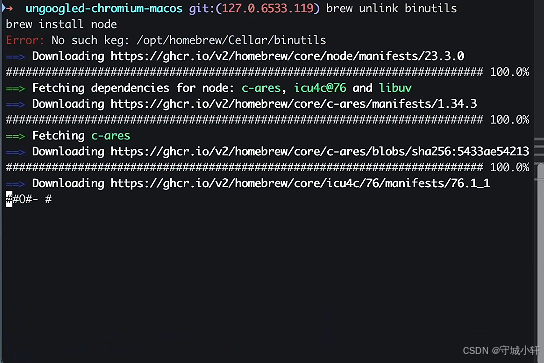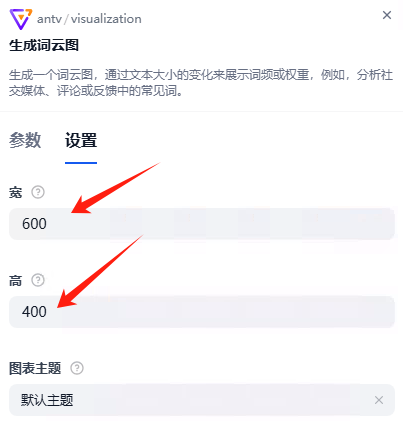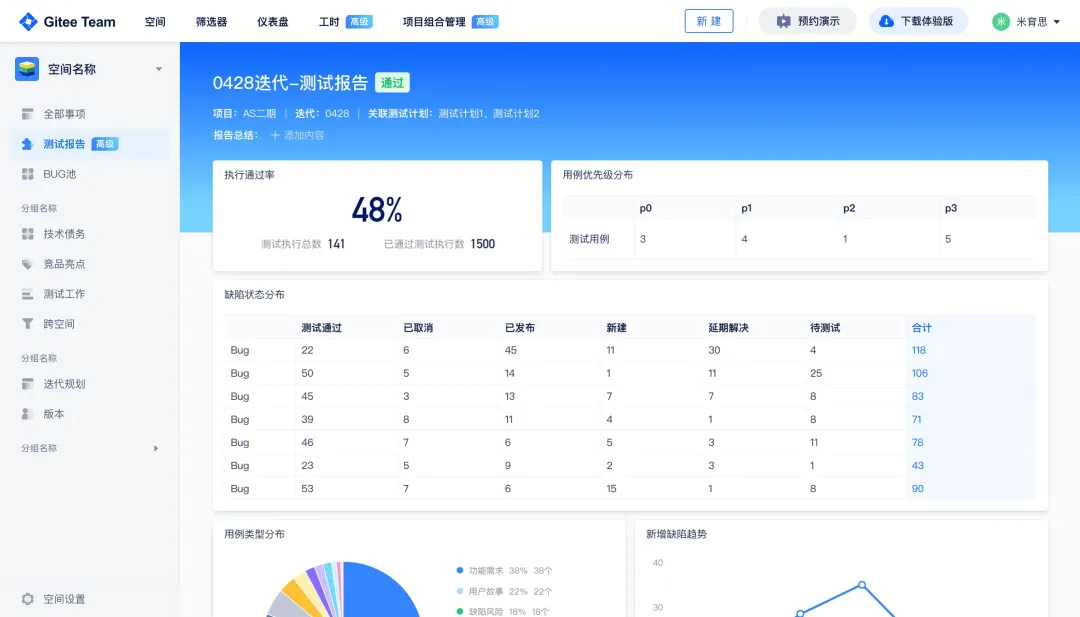spring mvc源码学习笔记之八
本文说点儿简单的。
如果你想研究基于 XML 配置的 spring mvc 的话,可以简单扫一眼本文。
在基于 XML 配置的 spring mvc 开发中,我们主要就是通过 spring 提供的各种标签来配置。
但是,大家是不是都有个疑问,spring 到底给我们提供了多少标签?都有哪些?子元素有哪些?属性有哪些?
当然,如果你对 XML 非常熟悉,那简单,直接看对应模块的 schema 文件就行了。
比如在 sping-webmvc 模块的 META-INF/spring.schemas 文件中就定义了如下这些 schema
http\://www.springframework.org/schema/mvc/spring-mvc-3.0.xsd=org/springframework/web/servlet/config/spring-mvc.xsd
http\://www.springframework.org/schema/mvc/spring-mvc-3.1.xsd=org/springframework/web/servlet/config/spring-mvc.xsd
http\://www.springframework.org/schema/mvc/spring-mvc-3.2.xsd=org/springframework/web/servlet/config/spring-mvc.xsd
http\://www.springframework.org/schema/mvc/spring-mvc-4.0.xsd=org/springframework/web/servlet/config/spring-mvc.xsd
http\://www.springframework.org/schema/mvc/spring-mvc-4.1.xsd=org/springframework/web/servlet/config/spring-mvc.xsd
http\://www.springframework.org/schema/mvc/spring-mvc-4.2.xsd=org/springframework/web/servlet/config/spring-mvc.xsd
http\://www.springframework.org/schema/mvc/spring-mvc-4.3.xsd=org/springframework/web/servlet/config/spring-mvc.xsd
http\://www.springframework.org/schema/mvc/spring-mvc.xsd=org/springframework/web/servlet/config/spring-mvc.xsd
你点开这些链接,研究其中的内容就行了,比如 http://www.springframework.org/schema/mvc/spring-mvc-4.3.xsd 这个文件内容如下(只是部分)
This XML file does not appear to have any style information associated with it. The document tree is shown below.
<xsd:schema xmlns="http://www.springframework.org/schema/mvc" xmlns:xsd="http://www.w3.org/2001/XMLSchema" xmlns:beans="http://www.springframework.org/schema/beans" xmlns:tool="http://www.springframework.org/schema/tool" targetNamespace="http://www.springframework.org/schema/mvc" elementFormDefault="qualified" attributeFormDefault="unqualified">
<xsd:import namespace="http://www.springframework.org/schema/beans" schemaLocation="https://www.springframework.org/schema/beans/spring-beans-4.3.xsd"/>
<xsd:import namespace="http://www.springframework.org/schema/tool" schemaLocation="https://www.springframework.org/schema/tool/spring-tool-4.3.xsd"/>
<xsd:element name="annotation-driven">
<xsd:annotation>
<xsd:documentation source="java:org.springframework.web.servlet.mvc.method.annotation.RequestMappingHandlerAdapter">
<![CDATA[ Configures the annotation-driven Spring MVC Controller programming model. Note that this tag works in Web MVC only, not in Portlet MVC! See org.springframework.web.servlet.config.annotation.EnableWebMvc javadoc for details on code-based alternatives to enabling annotation-driven Spring MVC support. ]]>
</xsd:documentation>
</xsd:annotation>
<xsd:complexType>
<xsd:all minOccurs="0">
<xsd:element name="path-matching" minOccurs="0">
<xsd:annotation>
<xsd:documentation>
<![CDATA[ Configures the path matching part of the Spring MVC Controller programming model. Like annotation-driven, code-based alternatives are also documented in EnableWebMvc javadoc. ]]>
</xsd:documentation>
</xsd:annotation>
<xsd:complexType>
<xsd:attribute name="suffix-pattern" type="xsd:boolean">
<xsd:annotation>
<xsd:documentation>
<![CDATA[ Whether to use suffix pattern match (".*") when matching patterns to requests. If enabled a method mapped to "/users" also matches to "/users.*". The default value is true. ]]>
</xsd:documentation>
</xsd:annotation>
</xsd:attribute>
<xsd:attribute name="trailing-slash" type="xsd:boolean">
<xsd:annotation>
<xsd:documentation>
<![CDATA[ Whether to match to URLs irrespective of the presence of a trailing slash. If enabled a method mapped to "/users" also matches to "/users/". The default value is true. ]]>
</xsd:documentation>
</xsd:annotation>
</xsd:attribute>
<xsd:attribute name="registered-suffixes-only" type="xsd:boolean">
<xsd:annotation>
<xsd:documentation>
<![CDATA[ Whether suffix pattern matching should work only against path extensions explicitly registered when you configure content negotiation. This is generally recommended to reduce ambiguity and to avoid issues such as when a "." appears in the path for other reasons. The default value is false. ]]>
</xsd:documentation>
</xsd:annotation>
</xsd:attribute>
<xsd:attribute name="path-helper" type="xsd:string">
<xsd:annotation>
<xsd:documentation>
<![CDATA[ The bean name of the UrlPathHelper to use for resolution of lookup paths. Use this to override the default UrlPathHelper with a custom subclass, or to share common UrlPathHelper settings across multiple HandlerMappings and MethodNameResolvers. ]]>
</xsd:documentation>
</xsd:annotation>
</xsd:attribute>
<xsd:attribute name="path-matcher" type="xsd:string">
<xsd:annotation>
<xsd:documentation>
<![CDATA[ The bean name of the PathMatcher implementation to use for matching URL paths against registered URL patterns. Default is AntPathMatcher. ]]>
</xsd:documentation>
</xsd:annotation>
</xsd:attribute>
</xsd:complexType>
</xsd:element>
<xsd:element name="message-converters" minOccurs="0">
<xsd:annotation>
<xsd:documentation>
<![CDATA[ Configures one or more HttpMessageConverter types to use for converting @RequestBody method parameters and @ResponseBody method return values. Using this configuration element is optional. HttpMessageConverter registrations provided here will take precedence over HttpMessageConverter types registered by default. Also see the register-defaults attribute if you want to turn off default registrations entirely. ]]>
</xsd:documentation>
</xsd:annotation>
<xsd:complexType>
<xsd:sequence>
<xsd:choice maxOccurs="unbounded">
<xsd:element ref="beans:bean">
<xsd:annotation>
<xsd:documentation>
<![CDATA[ An HttpMessageConverter bean definition. ]]>
</xsd:documentation>
</xsd:annotation>
</xsd:element>
<xsd:element ref="beans:ref">
<xsd:annotation>
<xsd:documentation>
<![CDATA[ A reference to an HttpMessageConverter bean. ]]>
</xsd:documentation>
</xsd:annotation>
</xsd:element>
</xsd:choice>
</xsd:sequence>
<xsd:attribute name="register-defaults" type="xsd:boolean" default="true">
<xsd:annotation>
<xsd:documentation>
<![CDATA[ Whether or not default HttpMessageConverter registrations should be added in addition to the ones provided within this element. ]]>
</xsd:documentation>
</xsd:annotation>
</xsd:attribute>
</xsd:complexType>
</xsd:element>
<xsd:element name="argument-resolvers" minOccurs="0">
<xsd:annotation>
<xsd:documentation>
<![CDATA[ Configures HandlerMethodArgumentResolver types to support custom controller method argument types. Using this option does not override the built-in support for resolving handler method arguments. To customize the built-in support for argument resolution configure RequestMappingHandlerAdapter directly. ]]>
</xsd:documentation>
</xsd:annotation>
<xsd:complexType>
<xsd:choice minOccurs="1" maxOccurs="unbounded">
<xsd:element ref="beans:bean" minOccurs="0" maxOccurs="unbounded">
<xsd:annotation>
<xsd:documentation>
<![CDATA[ The HandlerMethodArgumentResolver (or WebArgumentResolver for backwards compatibility) bean definition. ]]>
</xsd:documentation>
</xsd:annotation>
</xsd:element>
<xsd:element ref="beans:ref" minOccurs="0" maxOccurs="unbounded">
<xsd:annotation>
<xsd:documentation>
<![CDATA[ A reference to a HandlerMethodArgumentResolver bean definition. ]]>
</xsd:documentation>
<xsd:appinfo>
<tool:annotation kind="ref">
<tool:expected-type type="java:org.springframework.web.method.support.HandlerMethodArgumentResolver"/>
</tool:annotation>
</xsd:appinfo>
</xsd:annotation>
</xsd:element>
</xsd:choice>
</xsd:complexType>
</xsd:element>
<xsd:element name="return-value-handlers" minOccurs="0">
<xsd:annotation>
<xsd:documentation>
<![CDATA[ Configures HandlerMethodReturnValueHandler types to support custom controller method return value handling. Using this option does not override the built-in support for handling return values. To customize the built-in support for handling return values configure RequestMappingHandlerAdapter directly. ]]>
</xsd:documentation>
</xsd:annotation>
<xsd:complexType>
<xsd:choice minOccurs="1" maxOccurs="unbounded">
<xsd:element ref="beans:bean" minOccurs="0" maxOccurs="unbounded">
<xsd:annotation>
<xsd:documentation>
<![CDATA[ The HandlerMethodReturnValueHandler bean definition. ]]>
</xsd:documentation>
</xsd:annotation>
</xsd:element>
<xsd:element ref="beans:ref" minOccurs="0" maxOccurs="unbounded">
<xsd:annotation>
<xsd:documentation>
<![CDATA[ A reference to a HandlerMethodReturnValueHandler bean definition. ]]>
</xsd:documentation>
<xsd:appinfo>
<tool:annotation kind="ref">
<tool:expected-type type="java:org.springframework.web.method.support.HandlerMethodReturnValueHandler"/>
</tool:annotation>
</xsd:appinfo>
</xsd:annotation>
</xsd:element>
</xsd:choice>
</xsd:complexType>
</xsd:element>
<xsd:element name="async-support" minOccurs="0">
<xsd:annotation>
<xsd:documentation>
<![CDATA[ Configure options for asynchronous request processing. ]]>
</xsd:documentation>
</xsd:annotation>
<xsd:complexType>
<xsd:all minOccurs="0">
<xsd:element name="callable-interceptors" minOccurs="0">
<xsd:annotation>
<xsd:documentation>
<![CDATA[ The ordered set of interceptors that intercept the lifecycle of concurrently executed requests, which start after a controller returns a java.util.concurrent.Callable. ]]>
</xsd:documentation>
</xsd:annotation>
<xsd:complexType>
<xsd:sequence>
<xsd:element ref="beans:bean" minOccurs="1" maxOccurs="unbounded">
<xsd:annotation>
<xsd:documentation>
<![CDATA[ Registers a CallableProcessingInterceptor. ]]>
</xsd:documentation>
</xsd:annotation>
</xsd:element>
</xsd:sequence>
</xsd:complexType>
</xsd:element>
<xsd:element name="deferred-result-interceptors" minOccurs="0">
<xsd:annotation>
<xsd:documentation>
<![CDATA[ The ordered set of interceptors that intercept the lifecycle of concurrently executed requests, which start after a controller returns a DeferredResult. ]]>
</xsd:documentation>
</xsd:annotation>
<xsd:complexType>
<xsd:sequence>
<xsd:element ref="beans:bean" minOccurs="1" maxOccurs="unbounded">
<xsd:annotation>
<xsd:documentation>
<![CDATA[ Registers a DeferredResultProcessingInterceptor. ]]>
</xsd:documentation>
</xsd:annotation>
</xsd:element>
</xsd:sequence>
</xsd:complexType>
</xsd:element>
</xsd:all>
<xsd:attribute name="task-executor" type="xsd:string">
<xsd:annotation>
<xsd:documentation source="java:org.springframework.core.task.AsyncTaskExecutor">
<![CDATA[ The bean name of a default AsyncTaskExecutor to use when a controller method returns a {@link Callable}. Controller methods can override this default on a per-request basis by returning an AsyncTask. By default, a SimpleAsyncTaskExecutor is used which does not re-use threads and is not recommended for production. ]]>
</xsd:documentation>
<xsd:appinfo>
<tool:annotation kind="ref">
<tool:expected-type type="java:org.springframework.core.task.AsyncTaskExecutor"/>
</tool:annotation>
</xsd:appinfo>
</xsd:annotation>
</xsd:attribute>
<xsd:attribute name="default-timeout" type="xsd:long">
<xsd:annotation>
<xsd:documentation>
<![CDATA[ Specify the amount of time, in milliseconds, before asynchronous request handling times out. In Servlet 3, the timeout begins after the main request processing thread has exited and ends when the request is dispatched again for further processing of the concurrently produced result. If this value is not set, the default timeout of the underlying implementation is used, e.g. 10 seconds on Tomcat with Servlet 3. ]]>
</xsd:documentation>
</xsd:annotation>
</xsd:attribute>
</xsd:complexType>
</xsd:element>
</xsd:all>
<xsd:attribute name="conversion-service" type="xsd:string">
<xsd:annotation>
<xsd:element ref="beans:ref">
<xsd:annotation>
<xsd:documentation source="org.springframework.web.servlet.resource.ResourceResolver">
<![CDATA[ A reference to a ResourceResolver bean. ]]>
</xsd:documentation>
</xsd:annotation>
</xsd:element>
</xsd:choice>
</xsd:sequence>
</xsd:complexType>
<xsd:complexType name="resource-transformers">
<xsd:annotation>
<xsd:documentation source="org.springframework.web.servlet.resource.ResourceTransformer">
<![CDATA[ A list of ResourceTransformer beans definition and references. A ResourceTransformer provides mechanisms for transforming the content of a resource. ]]>
</xsd:documentation>
</xsd:annotation>
<xsd:sequence>
<xsd:choice maxOccurs="unbounded">
<xsd:element ref="beans:bean">
<xsd:annotation>
<xsd:documentation source="org.springframework.web.servlet.resource.ResourceTransformer">
<![CDATA[ A ResourceTransformer bean definition. ]]>
</xsd:documentation>
</xsd:annotation>
</xsd:element>
<xsd:element ref="beans:ref">
<xsd:annotation>
<xsd:documentation source="org.springframework.web.servlet.resource.ResourceTransformer">
<![CDATA[ A reference to a ResourceTransformer bean. ]]>
</xsd:documentation>
</xsd:annotation>
</xsd:element>
</xsd:choice>
</xsd:sequence>
</xsd:complexType>
<xsd:complexType name="resource-chain">
<xsd:annotation>
</xsd:attribute>
<xsd:attribute name="content-type" type="xsd:string">
<xsd:annotation>
<xsd:documentation>
<![CDATA[ Set the content type to use for the response (text/html by default). ]]>
</xsd:documentation>
</xsd:annotation>
</xsd:attribute>
<xsd:attribute name="charset" type="xsd:string">
<xsd:annotation>
<xsd:documentation>
<![CDATA[ Set the charset used to read script and template files (UTF-8 by default). ]]>
</xsd:documentation>
</xsd:annotation>
</xsd:attribute>
<xsd:attribute name="resource-loader-path" type="xsd:string">
<xsd:annotation>
<xsd:documentation>
<![CDATA[ The script engine resource loader path via a Spring resource location. ]]>
</xsd:documentation>
</xsd:annotation>
</xsd:attribute>
<xsd:attribute name="shared-engine" type="xsd:boolean">
<xsd:annotation>
<xsd:documentation>
<![CDATA[ When set to false, use thread-local ScriptEngine instances instead of one single shared instance. This flag should be set to false for those using non thread-safe script engines with templating libraries not designed for concurrency, like Handlebars or React running on Nashorn for example. In this case, Java 8u60 or greater is required due to this bug: https://bugs.openjdk.java.net/browse/JDK-8076099. ]]>
</xsd:documentation>
</xsd:annotation>
</xsd:attribute>
</xsd:complexType>
</xsd:element>
<xsd:element name="cors">
<xsd:annotation>
<xsd:documentation>
<![CDATA[ Configure cross origin requests processing. ]]>
</xsd:documentation>
</xsd:annotation>
<xsd:complexType>
<xsd:sequence>
<xsd:element name="mapping" minOccurs="1" maxOccurs="unbounded">
<xsd:annotation>
<xsd:documentation>
<![CDATA[ Enable cross origin requests processing on the specified path pattern. By default, all origins, GET HEAD POST methods, all headers and credentials are allowed and max age is set to 30 minutes. ]]>
</xsd:documentation>
</xsd:annotation>
<xsd:complexType>
<xsd:attribute name="path" type="xsd:string" use="required">
<xsd:annotation>
<xsd:documentation>
<![CDATA[ A path into the application that should handle CORS requests. Exact path mapping URIs (such as "/admin") are supported as well as Ant-stype path patterns (such as /admin/**). ]]>
</xsd:documentation>
</xsd:annotation>
</xsd:attribute>
<xsd:attribute name="allowed-origins" type="xsd:string">
<xsd:annotation>
<xsd:documentation>
<![CDATA[ Comma-separated list of origins to allow, e.g. "https://domain1.com, https://domain2.com". The special value "*" allows all domains (default). Note that CORS checks use values from "Forwarded" (RFC 7239), "X-Forwarded-Host", "X-Forwarded-Port", and "X-Forwarded-Proto" headers, if present, in order to reflect the client-originated address. Consider using the ForwardedHeaderFilter in order to choose from a central place whether to extract and use such headers, or whether to discard them. See the Spring Framework reference for more on this filter. ]]>
</xsd:documentation>
</xsd:annotation>
</xsd:attribute>
<xsd:attribute name="allowed-methods" type="xsd:string">
<xsd:annotation>
<xsd:documentation>
<![CDATA[ Comma-separated list of HTTP methods to allow, e.g. "GET, POST". The special value "*" allows all method. By default GET, HEAD and POST methods are allowed. ]]>
</xsd:documentation>
</xsd:annotation>
</xsd:attribute>
<xsd:attribute name="allowed-headers" type="xsd:string">
<xsd:annotation>
<xsd:documentation>
<![CDATA[ Comma-separated list of headers that a pre-flight request can list as allowed for use during an actual request. The special value of "*" allows actual requests to send any header (default). ]]>
</xsd:documentation>
</xsd:annotation>
</xsd:attribute>
<xsd:attribute name="exposed-headers" type="xsd:string">
<xsd:annotation>
<xsd:documentation>
<![CDATA[ Comma-separated list of response headers other than simple headers (i.e. Cache-Control, Content-Language, Content-Type, Expires, Last-Modified, Pragma) that an actual response might have and can be exposed. Empty by default. ]]>
</xsd:documentation>
</xsd:annotation>
</xsd:attribute>
<xsd:attribute name="allow-credentials" type="xsd:boolean">
<xsd:annotation>
<xsd:documentation>
<![CDATA[ Whether user credentials are supported (true by default). ]]>
</xsd:documentation>
</xsd:annotation>
</xsd:attribute>
<xsd:attribute name="max-age" type="xsd:long">
<xsd:annotation>
<xsd:documentation>
<![CDATA[ How long, in seconds, the response from a pre-flight request can be cached by clients. 1800 seconds (30 minutes) by default. ]]>
</xsd:documentation>
</xsd:annotation>
</xsd:attribute>
</xsd:complexType>
</xsd:element>
</xsd:sequence>
</xsd:complexType>
</xsd:element>
</xsd:schema>
从这个角度入手,是没问题的。但是我感觉大多数人看了这种都头疼(除非你精通 XML)。
接下来,可以看另外一个文件 META-INF/spring.handlers 。比如,spring-webmvc 模块中,这个文件内容如下
http\://www.springframework.org/schema/mvc=org.springframework.web.servlet.config.MvcNamespaceHandler
MvcNamespaceHandler 这个类的内容如下
/** Copyright 2002-2016 the original author or authors.** Licensed under the Apache License, Version 2.0 (the "License");* you may not use this file except in compliance with the License.* You may obtain a copy of the License at** http://www.apache.org/licenses/LICENSE-2.0** Unless required by applicable law or agreed to in writing, software* distributed under the License is distributed on an "AS IS" BASIS,* WITHOUT WARRANTIES OR CONDITIONS OF ANY KIND, either express or implied.* See the License for the specific language governing permissions and* limitations under the License.*/package org.springframework.web.servlet.config;import org.springframework.beans.factory.xml.NamespaceHandler;
import org.springframework.beans.factory.xml.NamespaceHandlerSupport;/*** {@link NamespaceHandler} for Spring MVC configuration namespace.** @author Keith Donald* @author Jeremy Grelle* @author Sebastien Deleuze* @since 3.0*/
public class MvcNamespaceHandler extends NamespaceHandlerSupport {@Overridepublic void init() {registerBeanDefinitionParser("annotation-driven", new AnnotationDrivenBeanDefinitionParser());registerBeanDefinitionParser("default-servlet-handler", new DefaultServletHandlerBeanDefinitionParser());registerBeanDefinitionParser("interceptors", new InterceptorsBeanDefinitionParser());registerBeanDefinitionParser("resources", new ResourcesBeanDefinitionParser());registerBeanDefinitionParser("view-controller", new ViewControllerBeanDefinitionParser());registerBeanDefinitionParser("redirect-view-controller", new ViewControllerBeanDefinitionParser());registerBeanDefinitionParser("status-controller", new ViewControllerBeanDefinitionParser());registerBeanDefinitionParser("view-resolvers", new ViewResolversBeanDefinitionParser());registerBeanDefinitionParser("tiles-configurer", new TilesConfigurerBeanDefinitionParser());registerBeanDefinitionParser("freemarker-configurer", new FreeMarkerConfigurerBeanDefinitionParser());registerBeanDefinitionParser("groovy-configurer", new GroovyMarkupConfigurerBeanDefinitionParser());registerBeanDefinitionParser("script-template-configurer", new ScriptTemplateConfigurerBeanDefinitionParser());registerBeanDefinitionParser("cors", new CorsBeanDefinitionParser());}}看到这是不是就清晰了。
<mvc:annotation-driven/> 这个标签就是被类 AnnotationDrivenBeanDefinitionParser 解析的。以此类推。其他标签也是由对应的类解析的。
这里是以 spring-webmvc 模块为例来说的,其他模块如 spring-beans 、spring-context 都有对应 META-INF/spring.handlers 文件。分别用于解析对应的命名空间下的标签。
解释下命名空间的意思,就拿 <mvc:annotation-driven/> 来说,mvc 就是命名空间,再比如 <context:component-scan/> 这个标签,context 就是命名空间。
相关文章:

spring mvc源码学习笔记之八
本文说点儿简单的。 如果你想研究基于 XML 配置的 spring mvc 的话,可以简单扫一眼本文。 在基于 XML 配置的 spring mvc 开发中,我们主要就是通过 spring 提供的各种标签来配置。 但是,大家是不是都有个疑问,spring 到底给我们提…...

探秘5网口IIOT网关
在当今这个科技飞速发展的时代,工业领域正经历着一场深刻的变革,而工业物联网网关在其中扮演着至关重要的角色。 什么是IIOT网关 工业物联网网关,简单来说,就是连接工业现场设备与云端或者上层管理系统的关键桥梁。 而明达技术研…...

左神算法基础巩固--5
文章目录 前缀树生成前缀树查询前缀树查询字符串加入过几次查询所有加入的字符串中,有几个是以pre这个字符串作为前缀 删除前缀树中的某个字符串 贪心算法解题 前缀树 生成前缀树 要想生成一棵前缀树,需要先创建一个根节点,这个根节点有26条…...
Python的Matplotlib库应用(超详细教程)
目录 一、环境搭建 1.1 配置matplotlib库 1.2 配置seaborn库 1.3 配置Skimage库 二、二维图像 2.1 曲线(直线)可视化 2.2 曲线(虚线)可视化 2.3 直方图 2.4 阶梯图 三、三维图像 3.1 3D曲面图 3.2 3D散点图 3.3 3D散…...

负载均衡服务器要怎么配置?
目录 一、概述: 二、硬件配置: 三、操作系统配置: 四、负载均衡软件: 五、网络配置: 六、软件安装步骤: 6.1 安装 Nginx 6.2 安装 LVS 6.3 安装 HAProxy 6.4 安装 Keepalived 一、概述࿱…...

CANopen转EtherCAT网关连接伺服驱动
在现代工业自动化领域,CANopen和EtherCAT是两种常见的通信协议,各自在不同的应用场景中发挥着重要作用。然而,随着工业自动化系统的日益复杂化,不同设备间的通信需求也变得多样化。因此,如何实现不同协议设备之间的无缝…...

自动化测试脚本实践:基于 Bash 的模块化测试框架
前言 在现代软件开发中,测试自动化是确保软件质量和稳定性的核心手段之一。随着开发周期的缩短和功能模块的增多,手动测试逐渐无法满足高效性和准确性的需求。因此,测试人员需要依赖自动化工具来提升测试效率,减少人为干预和错误。…...

WebSocket 测试入门篇
Websocket 是一种用于 H5 浏览器的实时通讯协议,可以做到数据的实时推送,可适用于广泛的工作环境,例如客服系统、物联网数据传输系统, 基础介绍 我们平常接触最多的是 http 协议的接口,http 协议是请求与响应的模式&…...
)
Apache Traffic存在SQL注入漏洞(CVE-2024-45387)
免责声明: 本文旨在提供有关特定漏洞的深入信息,帮助用户充分了解潜在的安全风险。发布此信息的目的在于提升网络安全意识和推动技术进步,未经授权访问系统、网络或应用程序,可能会导致法律责任或严重后果。因此,作者不对读者基于本文内容所采取的任何行为承担责任。读者在…...

Centos7使用yum工具出现 Could not resolve host: mirrorlist.centos.org
在 CentOS 7 中使用 yum 工具时,出现 "Could not resolve host: mirrorlist.centos.org" 的错误,一般情况是因为默认的镜像源无法访问。 以下是一些常用的解决方法: 检查网络连接:首先使用 ping 命令测试网络连接是否…...
)
zookeeper shell操作和zookeeper 典型应用(配置中心、集群选举服务、分布式锁)
文章目录 引言I zookeeper客户端命令查看子节点 ls创建子节点 create获取节点信息 get更新节点数据 set删除节点 delete\ rmrII 监听机制node1:设置监听node3:修改监听节点node1:得到监听反馈III zookeeper 典型应用分布式锁集群选举服务数据发布/订阅(配置中心)引言 zk 的…...

Vue中Watch使用监听修改变动
使用注意 监听一个值时 多个值时...

Lua语言的文件IO
1、我们都知道,在任何语言当中都有输入输出,比如c语言当中就有很多printf,scanf,get ,put,gets,puts,文件io:open,read,write,close,标准io:fopen,fread,fwrite,fclose.在lua语言当中,也有相同的一些输入输出特性,叫io.open,io.re…...

C语言基本知识复习浓缩版:输出函数printf
输出函数printf学习 printf()的作用是将文本输出到屏幕上使用之前需要先引入stdio.h头文件printf函数在使用的时候,至少需要一个参数 printf() 是 C 语言标准库中的一个函数,用于将格式化的文本输出到标准输出设备(通常是屏幕)。…...

Ubuntu中使用miniconda安装R和R包devtools
安装devtools环境包 sudo apt-get install gfortran -y sudo apt-get install build-essential -y sudo apt-get install libxt-dev -y sudo apt-get install libcurl4-openssl-dev -y sudo apt-get install libxml2.6-dev -y sudo apt-get install libssl-dev -y sudo apt-g…...

Jmeter-压测时接口如何按照顺序执行
Jmeter-压测时接口如何按照顺序执行-临界部分控制器 在进行压力测试时,需要按照顺序进行压测,比如按照接口1、接口2、接口3、接口4 进行执行 查询结果是很混乱的,如果请求次数少,可能会按照顺序执行,但是随着次数增加…...

Ungoogled Chromium127 编译指南 MacOS篇(七)- 安装依赖包
1. 引言 在获取了 Ungoogled Chromium 的源代码之后,我们需要安装所有必要的依赖包。这些依赖包对于成功编译 Chromium 至关重要。本文将指导您完成所有必需软件包的安装。 2. 依赖包安装 2.1 使用 Homebrew 安装基础依赖 # 安装 Ninja 构建系统 brew install n…...

批量写入数据到数据库,卡顿怎么解决
在批量写入数据到数据库时,遇到卡顿或性能瓶颈是比较常见的问题。以下是一些可能的解决方案和优化策略,帮助你提高批量写入的性能: ### 1. **批量大小优化** - **调整批量大小**:尝试调整批量写入的数据量,找到一个平衡点。过大或过小的批量大小都可能影响性能。通常,批…...

Python爬虫 - 豆瓣图书数据爬取、处理与存储
文章目录 前言一、使用版本二、需求分析1. 分析要爬取的内容1.1 分析要爬取的单个图书信息1.2 爬取步骤1.2.1 爬取豆瓣图书标签分类页面1.2.2 爬取分类页面1.2.3 爬取单个图书页面 1.3 内容所在的标签定位 2. 数据用途2.1 基础分析2.2 高级分析 3. 应对反爬机制的策略3.1 使用 …...

Qt 5.14.2 学习记录 —— 칠 QWidget 常用控件(2)
文章目录 1、Window Frame2、windowTitle3、windowIcon4、qrc机制5、windowOpacity 1、Window Frame 在运行Qt程序后,除了用户做的界面,最上面还有一个框,这就是window frame框。对于界面的元素,它们的原点是Qt界面的左上角或win…...
:手搓截屏和帧率控制)
Python|GIF 解析与构建(5):手搓截屏和帧率控制
目录 Python|GIF 解析与构建(5):手搓截屏和帧率控制 一、引言 二、技术实现:手搓截屏模块 2.1 核心原理 2.2 代码解析:ScreenshotData类 2.2.1 截图函数:capture_screen 三、技术实现&…...

DeepSeek 赋能智慧能源:微电网优化调度的智能革新路径
目录 一、智慧能源微电网优化调度概述1.1 智慧能源微电网概念1.2 优化调度的重要性1.3 目前面临的挑战 二、DeepSeek 技术探秘2.1 DeepSeek 技术原理2.2 DeepSeek 独特优势2.3 DeepSeek 在 AI 领域地位 三、DeepSeek 在微电网优化调度中的应用剖析3.1 数据处理与分析3.2 预测与…...

电脑插入多块移动硬盘后经常出现卡顿和蓝屏
当电脑在插入多块移动硬盘后频繁出现卡顿和蓝屏问题时,可能涉及硬件资源冲突、驱动兼容性、供电不足或系统设置等多方面原因。以下是逐步排查和解决方案: 1. 检查电源供电问题 问题原因:多块移动硬盘同时运行可能导致USB接口供电不足&#x…...

MODBUS TCP转CANopen 技术赋能高效协同作业
在现代工业自动化领域,MODBUS TCP和CANopen两种通讯协议因其稳定性和高效性被广泛应用于各种设备和系统中。而随着科技的不断进步,这两种通讯协议也正在被逐步融合,形成了一种新型的通讯方式——开疆智能MODBUS TCP转CANopen网关KJ-TCPC-CANP…...

【HTML-16】深入理解HTML中的块元素与行内元素
HTML元素根据其显示特性可以分为两大类:块元素(Block-level Elements)和行内元素(Inline Elements)。理解这两者的区别对于构建良好的网页布局至关重要。本文将全面解析这两种元素的特性、区别以及实际应用场景。 1. 块元素(Block-level Elements) 1.1 基本特性 …...

dify打造数据可视化图表
一、概述 在日常工作和学习中,我们经常需要和数据打交道。无论是分析报告、项目展示,还是简单的数据洞察,一个清晰直观的图表,往往能胜过千言万语。 一款能让数据可视化变得超级简单的 MCP Server,由蚂蚁集团 AntV 团队…...

LangChain知识库管理后端接口:数据库操作详解—— 构建本地知识库系统的基础《二》
这段 Python 代码是一个完整的 知识库数据库操作模块,用于对本地知识库系统中的知识库进行增删改查(CRUD)操作。它基于 SQLAlchemy ORM 框架 和一个自定义的装饰器 with_session 实现数据库会话管理。 📘 一、整体功能概述 该模块…...

从“安全密码”到测试体系:Gitee Test 赋能关键领域软件质量保障
关键领域软件测试的"安全密码":Gitee Test如何破解行业痛点 在数字化浪潮席卷全球的今天,软件系统已成为国家关键领域的"神经中枢"。从国防军工到能源电力,从金融交易到交通管控,这些关乎国计民生的关键领域…...

Spring AI Chat Memory 实战指南:Local 与 JDBC 存储集成
一个面向 Java 开发者的 Sring-Ai 示例工程项目,该项目是一个 Spring AI 快速入门的样例工程项目,旨在通过一些小的案例展示 Spring AI 框架的核心功能和使用方法。 项目采用模块化设计,每个模块都专注于特定的功能领域,便于学习和…...

规则与人性的天平——由高考迟到事件引发的思考
当那位身着校服的考生在考场关闭1分钟后狂奔而至,他涨红的脸上写满绝望。铁门内秒针划过的弧度,成为改变人生的残酷抛物线。家长声嘶力竭的哀求与考务人员机械的"这是规定",构成当代中国教育最尖锐的隐喻。 一、刚性规则的必要性 …...
